
 Logicmojo - Updated Jan 8, 2025
Logicmojo - Updated Jan 8, 2025
Introduction
Data science, is currently growing as an excellent job path for this generation. It is one of the most promising and exciting options available. More need for Data Scientists is increasing in the market. According to current reports, demand will multiply several times more in the future years. So, if you're new to data science, the greatest thing you can do is brainstorm some real-time data science project ideas.
In the below video, we explain in details how to make data science projects and add in your resume.
Data Science Projects are a great way to learn how to use data science methodologies to solve real-world problems. They can help you to develop your skills in data cleaning, data analysis, machine learning, and other data science techniques.







There are many different types of data science projects, from beginner to advanced. This means that there is a project for everyone, regardless of their skill level.
Here are some specific examples of data science projects that you can do:
Beginner:
Natural language processing to identify false news articles.
Identify the boundaries of driving lanes in a video or image
Satellite imagery and machine learning to identify and predict forest fires
Intermediate:
Detect the gender and age of a person from a photograph or video.
Recognize the emotions expressed in speech.
Create a chatbot that can interact with users in a natural way.
Advanced:
Detect fraud in credit card transactions.
Classify customer sentiment in product reviews.
Build a recommender system for movies or books.
These are just a few examples, and there are many other possibilities. The best way to find a data science project that is right for you is to think about your interests and skills. What are you passionate about? What skills do you want to develop? Once you have a good idea of what you want to do, you can start looking for projects that fit your criteria.
Data science projects are a great way to learn data science and to build your skills. They can also be a great way to get your foot in the door of the data science field. If you are interested in data science, I encourage you to find a project that you are interested in and start working on it today.
Data Science Projects
Data science projects encompass a series of tasks and processes aimed at extracting valuable insights from vast datasets. These projects involve the use of various techniques, tools, and algorithms to analyze data and generate actionable conclusions.
Whether you're a complete beginner or an expert, you may obtain hands-on experience by attempting tasks on your own or working with peers. We've compiled a list of the interesting top data science projects to try to get you started. See what stimulates your interest and get started!
Data Science Projects For Beginners
A list of data science projects ideal for students or professionals who are new to the field will be provided in this area. You should be able to gain practical experience from these projects using Python and R to create data science and machine learning-based solutions such as classification, clustering, computer vision, etc.
1. Project on Forest Fire Detection :
• Source Code:- Forest Fire Detection
• Language:- Python
One effective application of data science is the creation of a system for predicting forest fires and wildfires. Uncontrolled fire in a forest is known as a wildfire or forest fire. Every forest blaze has significantly damaged the environment, wildlife habitats, and private property.
K-means clustering can be used to pinpoint the main fire hotspots and their severity, allowing you to regulate and even predict the chaotic character of wildfires. This might help with resource allocation in the right way. To improve the accuracy of your model, you can also incorporate meteorological data to identify typical times and seasons for wildfires.

2. Project on Fake NEWS Detection
• Source Code:- Fake NEWS Detection
• Language:- Python
With this idea for a data science project, you can create a specialized model in Python that can accurately determine whether the news is accurate journalism or misinformation. Build a "TfidfVectorizer" classifier for this purpose, then use a "PassiveAggressiveClassifier" to segment the news into "Real" and "Fake" segments. A dataset of 77964 dimensions will be present, and all of these operations will be carried out in the "JupyterLab."
This Data Science project's major goal is to create a real-time machine learning model that can accurately identify the veracity of social media news. Term frequency, or "TF," is the sum of all the times a term will appear in a single document. IDF, or "Inverse Document Frequency," on the other hand, is a formula that calculates a word's worth depending on how frequently it appears in different documents.
According to the "Common words" approach, words that frequently appear in a number of different documents are deemed to be less significant. The 'TFIDFVectorizer' analyzes the collection of these documents and then adds a 'TF-IDF' matrix in response.
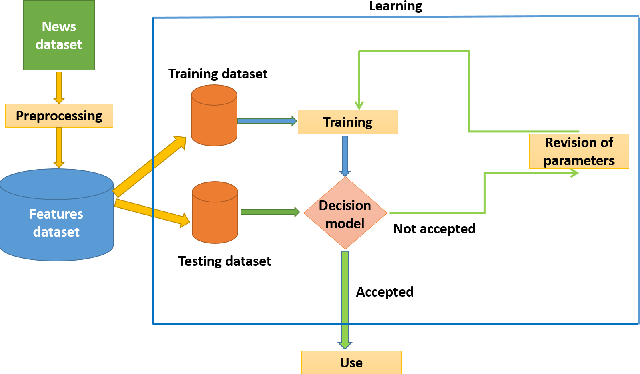
3. Project on Detecting Parkinson’s Disease
• Source Code:- Detecting Parkinson’s Disease
• Language:- Python
The use of data science is already being used to enhance services and the healthcare industry. Data science has greatly aided in the early diagnosis of diseases, which can greatly improve prognosis and perhaps save many lives.
Finding out whether a patient has Parkinson's disease or not is the goal of this initiative. You will gain practical experience using the XGBoost algorithm to categorize whether or not a patient's records are associated with Parkinson's disease.
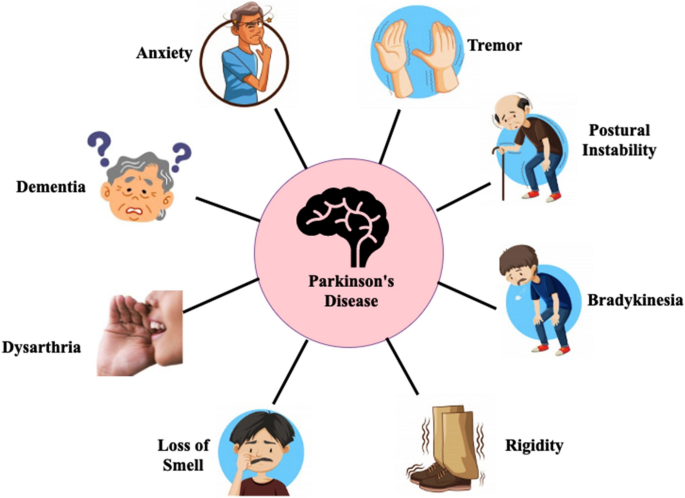
4. Project on Sentiment Analysis
• Source Code:- Sentiment Analysis
• Language:- R
One of the cutting-edge and intriguing machine learning initiatives is this one. As the ocean of big data, social media platforms like Facebook, Twitter, and YouTube. Therefore, using these data for data mining can help us comprehend user attitude and opinions in a variety of ways.
The process of analyzing language to identify attitudes and opinions, depending on their polarity, is known as sentiment analysis. This is a categorization type where the categories may be many (happy, furious, sad, disgusted, etc.) or binary (positive and negative). This data science project will be implemented using the R programming language and the dataset provided by the 'janeaustenR' package. AFINN, bing, and loughran are examples of general-purpose lexicons that we will utilize. We will also execute an inner join. Finally, to display the outcome, a word cloud will be created.
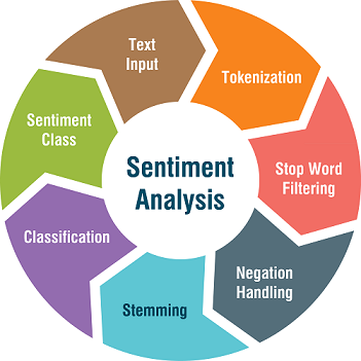
5. Project on Road Lane Line Detection
• Source Code:- Road Lane Line Detection
• Language:- Python
A Live Lane-Line Detection Systems built-in Python language is another example of a Data Science project concept for beginners. In this project, lines painted on the road are used to guide a human driver in making lane detections.
In addition, it also relates to which way the driver should turn their car. The development of driverless automobiles depends on the use of this Data Science Project application. As a result, you can create software that has the powerful capacity to recognize a track line from input photos or from a continuous video frame.
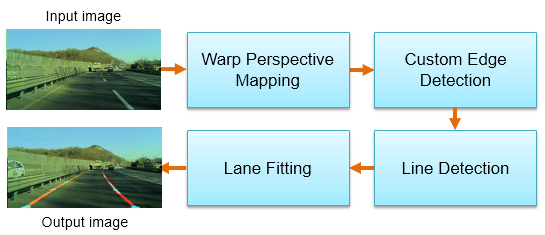
6. Project on Climate Change Impacts on the Global Food Supply
• Source Code:- Climate Change Impacts on the Global Food Supply
• Language:- Python
The biggest environmental concerns that must be addressed are the abnormalities and variations in the climate that occur frequently. The earth's population of humans will be impacted by these environmental changes.
The goal of this data science project is to analyze how changes in climatic conditions affect food production around the world. The evaluation of the effects of climatic changes on primary agricultural yields is the primary goal of this study.
This research will examine all the impacts of changing rainfall patterns and temperatures. The impact of carbon dioxide on plant growth and the unpredictability of climate change will then be examined. As a result, the main emphasis of this study will be on data representations. Additionally, it will evaluate production in various cities and areas of the world.
7. Project on Color Detection with Python
• Source Code:- Color Detection with Python
• Language:- Python
In order to identify objects, color detection is required. Real-world uses for color detection systems include traffic signal detection in self-driving cars, use as a tool in various picture editing or drawing programs, etc. You will use Python to deal with OpenCV-based color detection in this project. The project will choose each hue for a certain image and display its name and corresponding RGB values.

Data Science Projects For Intermediates
1. Project on Gender and Age Detection
• Source Code:- Gender and Age Detection
• Language:- Python
This gender detection and age prediction project, which has been classified as a classification challenge, will put your machine learning and computer vision abilities to the test. The objective is to create a system that can analyze an individual's photograph and attempt to determine their age and gender.
Convolutional neural networks can be implemented for this project using Python and the OpenCV library. The Adience dataset is available for this project. You should be aware that your model may be confused by elements like cosmetics, lighting, and facial expressions as they attempt to complicate the situation.
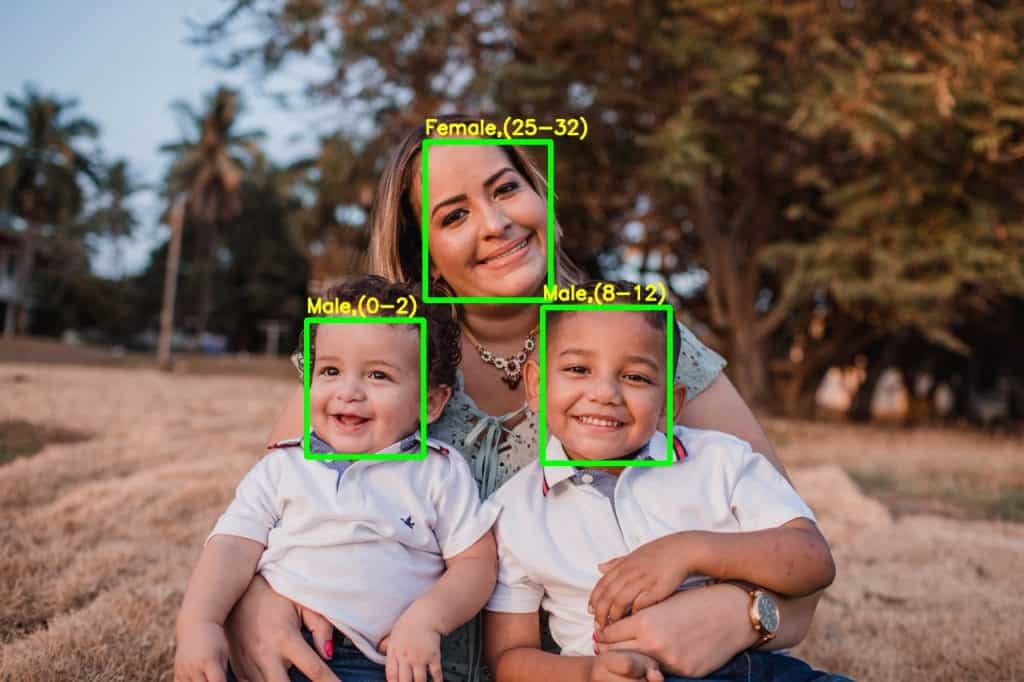
2. Project on Speech Emotions Recognition
• Source Code:- Speech Emotions Recognition
• Language:- Python
The ability to identify speech emotion is one of the most well-liked Data Science project concepts. This project is ideal for you if you want to learn how to use different libraries. You have probably encountered a lot of editing tools that can indicate the emotion of our speech. A Data Science project might be used to create this software model.
We will use 'librosa' in this Data Science project to perform 'Speech Emotion Recognition' on our behalf. A trial procedure that can detect human emotion is the SER process. Additionally, it is able to distinguish speech from affective states. As we do when we use our voice to express our feelings through a combination of tone and pitch.
There is no doubt that the Speech Emotion Recognition model is feasible. However, because human emotions are so subjective, it can be a difficult endeavor to complete. It can be fairly difficult to annotate human sounds. Therefore, in this case, you'll use the mfcc, mel, and chroma characteristics. Along with this, you'll employ the 'RAVDESS' dataset for the emotion recognition procedure. You will also learn how to create a "MLPClassifier" for this model in this Data Science assignment.

3. Project on Building Chatbots
• Source Code:- Building Chatbots
• Language:- Python
Businesses greatly benefit from chatbots since they operate smoothly and without any lag. They entirely reduce the effort for customer support by automating a large portion of the procedure. A range of methods supported by artificial intelligence, machine learning, and data science are used by chatbots.
Even the largest MNCs, like Amazon, are utilizing chatbots to improve the customer experience and assist with any delivery-related questions that customers may have.
A specific issue is frequently resolved by a chatbot that is domain-specific. You need to intelligently customize it for it to function well in your industry. Massive volumes of data are needed to train open-domain chatbots because they can be questioned about any topic. Chatbots function by analyzing consumer input and providing a pre-written response.
Chatbots interpret consumer input and respond with a suitable mapped response. Recurrent neural networks and the intents JSON dataset can be used to train the chatbot, and Python can be used for implementation. Your chatbot's purpose will determine whether you want it to be open-domain or domain-specific. These chatbots get smarter and more accurate as they process more encounters.
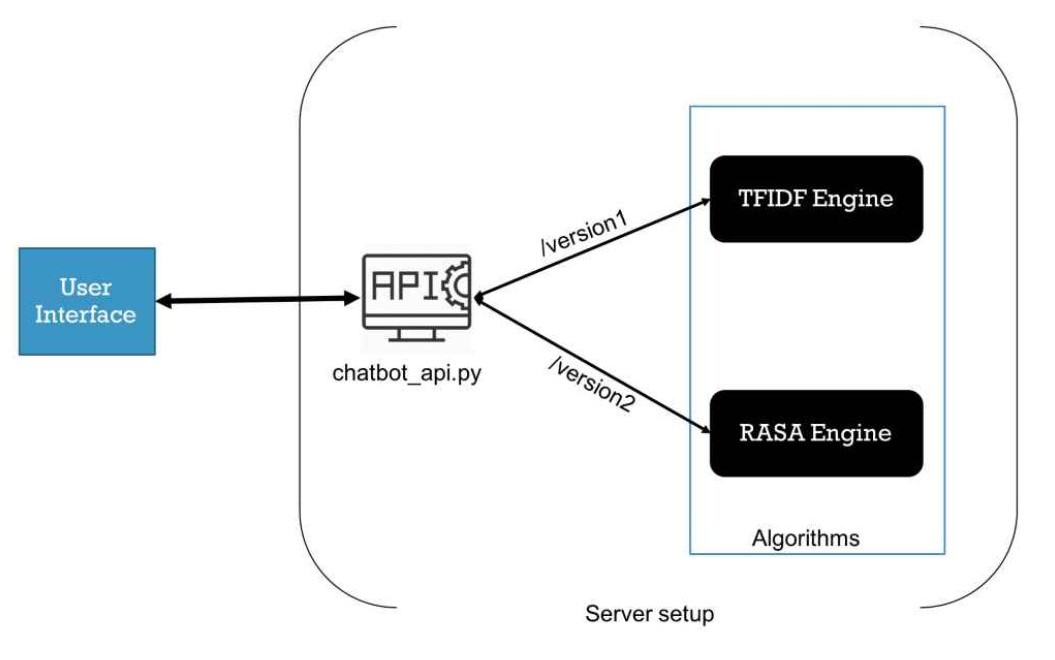
4. Project on Driver Drowsiness Detection
• Source Code:- Driver Drowsiness Detection
• Language:- Python
The "Keras & OpenCV Drowsiness Detection System" is a great idea for a Data Science project for intermediate students. Not only is nocturnal driving difficult, it's also dangerous. Many instances of accidents occurring because the motorist slept off behind the wheel have been reported.
Thus, this research can aid in reducing the number of traffic accidents that result from such situations. The major goal of this project is to identify times when a driver might become sleepy or tired while operating a motor vehicle. In this Python-based project, you may create a model that can quickly identify drowsy driving behavior and sound a warning siren by loudly beeping.
In this project, you can create a "deep learning model" and use it to classify photographs of people's eyes, depending on whether they are open or closed. Not only that, but another formula line in this model is used to determine the score.
The length of time that the eyes are closed determines the score. Throughout the entire driving session, the score is retained. This model will initiate workflow automation via which the alarm will begin to loudly ring if that score rises and reaches a predetermined threshold.
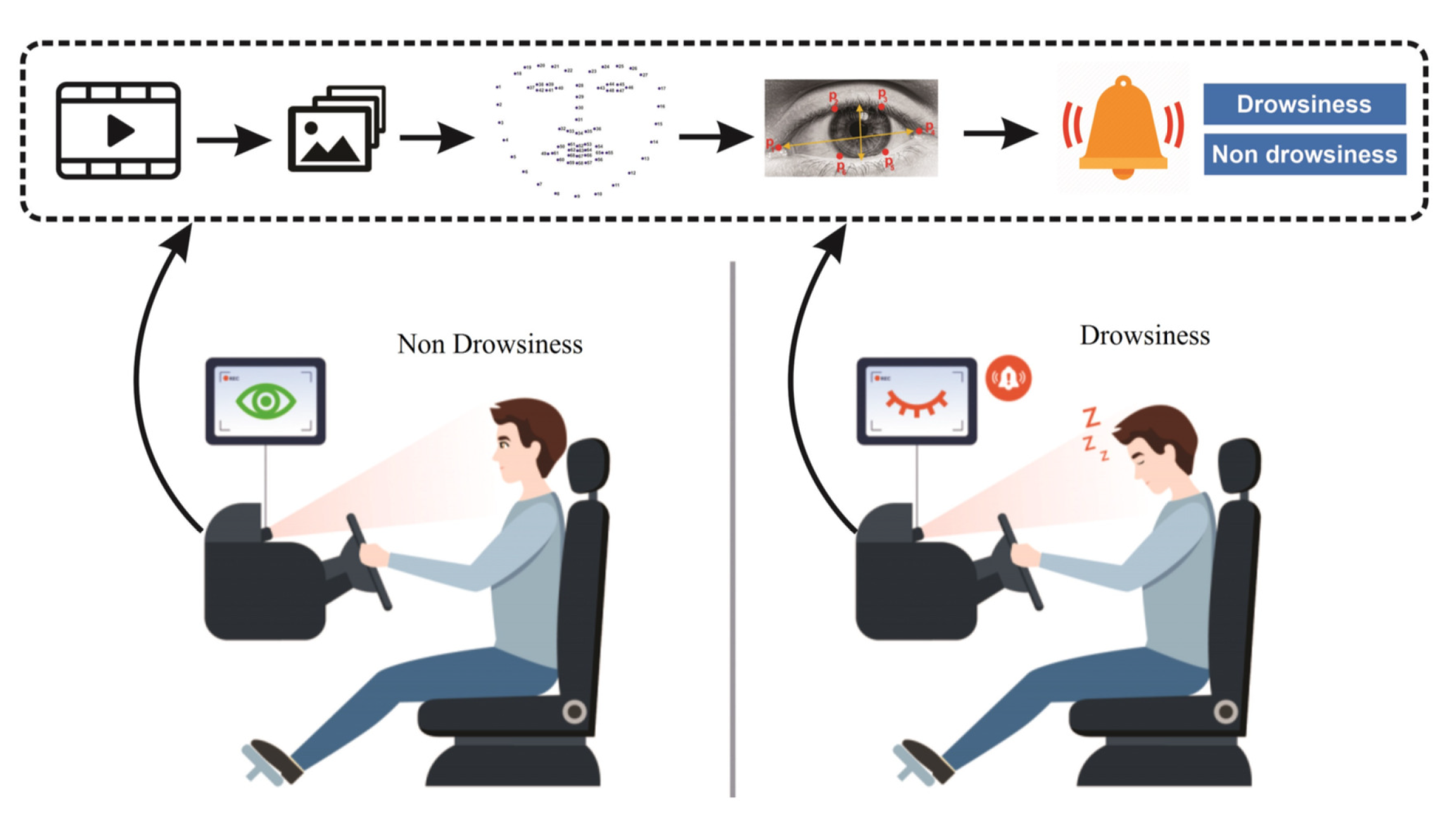
5. Project on Handwritten Digit Recognition Project
• Source Code:- Handwritten Digit Recognition Project (MNIST dataset)
• Language:- Python
This project is a great way to learn about how neural networks or deep learning operate. Your goal in this project is to label each number after processing a handwritten digit image. It is a multi-class classification project and a great opportunity to demonstrate your knowledge of artificial or convolutional neural networks.
Many data scientists and machine learning enthusiasts use the MNIST dataset of handwritten digits. The 'Convolutional Neural Networks' are used to carry out this project, as was previously mentioned. After that, you'll create a clever graphic-based user interface for drawing numbers on the canvas in real time, and then you'll create a model that will be used to the prediction of the numbers.
Data Science Projects For Advance Level
1. Project on Credit Card Fraud Detection
• Source Code:- Credit Card Fraud Detection
• Language:- Python
Contrary to popular belief, credit card fraud has been on the rise recently. By the end of 2022, we'll have more than one billion people using credit cards worldwide. However, credit card firms are now able to accurately identify and stop these scams because to advancements in technology like artificial intelligence, machine learning, and data analytics.
Simply defined, the goal is to separate fraudulent transactions from legitimate ones by analyzing the customer's typical spending patterns, including mapping the locations of those expenditures. The customer's transaction history can be used as the data set for this project in either R or Python, and you can feed it into decision trees, artificial neural networks, and logistic regression. You should be able to improve your system's overall accuracy as you feed it additional data.

2. Project on Traffic Signs Detection
• Source Code:- Traffic Signs Detection
• Language:- Python
The objective of this research is to use CNN techniques to build a model that will achieve high accuracy in self-driving car technology. All drivers must obey traffic signs and regulations in order to prevent accidents. The user must first understand how traffic signals appear in order to adhere to these guidelines.
A person must generally master all driving signals in order to receive a driver's license. Programs like "Traffic signs recognition" utilizing CNN, however, have been developed for self-driving cars, and they teach you how to construct a model that can precisely identify various sorts of traffic signals based on an image input.
3. Project on Customer Segmentations
• Source Code:- Customer Segmentations
• Language:- Python
One of the most well-liked data science projects is this one. Companies build various client groups before launching any campaign. Nowadays, using digital marketing is an up-to-date and sophisticated technique for businesses to target an audience for their online marketing initiatives. Therefore, various consumer segmentation is first carried out before launching a marketing campaign.
Unsupervised learning is frequently used for customer segmentation. Companies utilize clustering to discover client groupings to target the possible user base. To efficiently promote to each group, they divide their consumer base into categories based on traits like gender, age, interests, and purchasing patterns. We'll visualize the gender and age distributions while also using K-means clustering. Then, we'll examine their scores for spending and annual incomes.
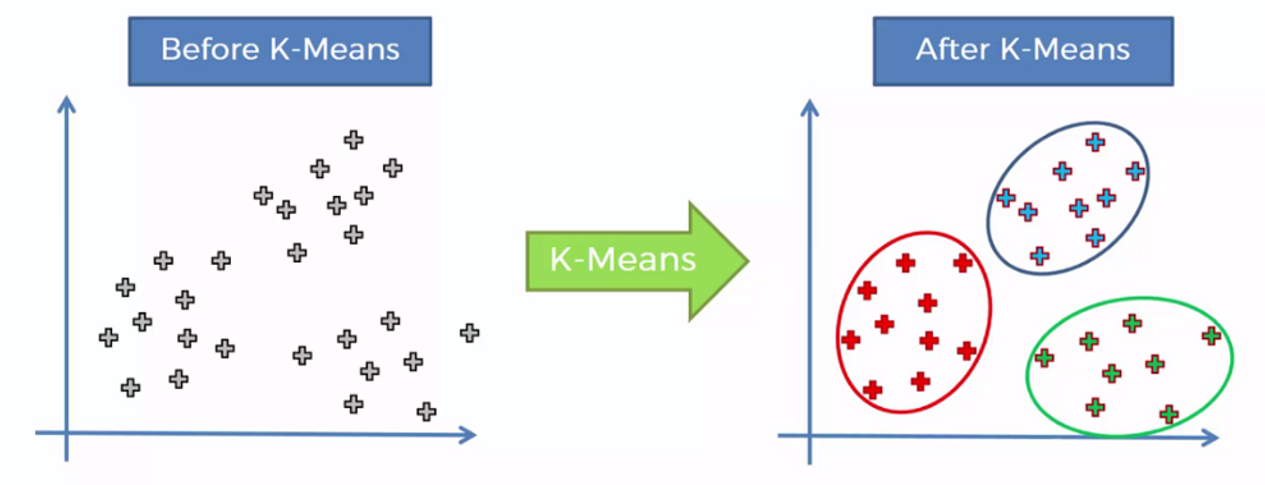
4. Project on Breast Cancer Classification
• Source Code:- Breast Cancer Classification
• Language:- Python
Breast cancer situations have been on the rise in recent years, and it is critical to detect them early in order to combat it and implement preventive measures.
The goal of this project is to create a Python-based system for the identification of breast cancer using the IDC (Invasive Ductal Carcinoma) dataset, which contains histology images of cancer-causing malignant cells. Convolution neural networks are used in this system to create the classification-based detection system.
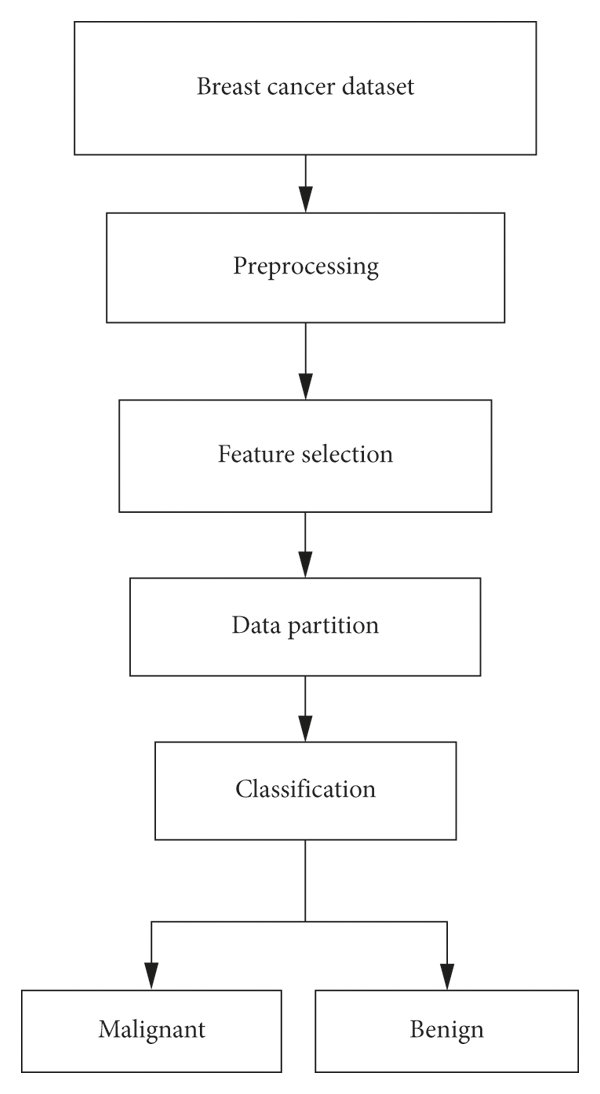
5. Project on Movie Recommendation System
• Source Code:- Movie Recommendation System
• Language:- R
Ever wonder how online video services like YouTube, Netflix, and others suggest what to watch next? They employ a device known as the recommendation system or recommender. Age, previously viewed shows, the most popular genre, and viewing frequency are just a few of the parameters it takes into account before feeding them into a machine learning model that determines what the user could be interested in viewing next.
You can attempt to design either a recommendation system based on content or a collaborative filtering recommendation system depending on your preferences and input data. With the MovieLens data collection, which includes ratings for more than 58,000 films, you can utilize R for this research. You can use recommenderlab, ggplot2, reshap2, and data.table as far as packages go.
Data Sources for Free Data Science Projects
When it comes to data science projects, having access to quality datasets is essential. Fortunately, there are several sources where you can download data science projects for free. Below, we've listed some of these sources and explained how they can be useful for your data science endeavors:
1. Kaggle:
Kaggle is a popular platform for data science competitions and datasets. It offers a wide range of datasets on various topics, from machine learning to natural language processing. You can find datasets with detailed descriptions, making it easy to understand and work with the data.
2. UCI Machine Learning Repository:
The UCI Machine Learning Repository is a comprehensive collection of datasets maintained by the University of California, Irvine. It provides datasets suitable for various machine learning tasks, and many of them have been used as benchmarks in research.
3. Data.gov:
Data.gov is the official U.S. government open data portal. It offers a vast collection of datasets related to government operations, public health, education, and more. These datasets can be valuable for projects involving public policy, civic engagement, or government analysis.
4. World Bank Open Data:
The World Bank provides access to a wealth of global economic and social data. This source is particularly useful for projects focusing on international development, economics, and global trends.
5. GitHub:
GitHub hosts numerous repositories containing datasets shared by researchers, organizations, and data enthusiasts. You can search for datasets by using relevant keywords and explore the code and documentation associated with them.
6. Reddit's r/datasets:
The r/datasets subreddit is a community where users share and request datasets. It's a great place to discover unique and niche datasets that may not be available elsewhere.
7. Google Dataset Search:
Google Dataset Search is a search engine designed specifically for finding datasets. It indexes datasets from various sources on the web, making it easier to discover datasets on your chosen topic.
8. DataHub:
DataHub is an open platform for publishing and sharing datasets. It covers a wide array of topics, including climate data, healthcare, and more. DataHub also provides tools for data exploration and visualization.
9. Statista:
Statista offers a collection of statistics and datasets on a wide range of topics, including business, industry, and market research. It's a valuable resource for projects involving data-driven business decisions.
10. Data Science Communities:
Online communities and forums like Stack Overflow and Reddit's data science-related subreddits often have users sharing datasets they've used in their projects. Engaging with these communities can lead you to interesting datasets and insights.
These data sources not only provide access to a diverse range of datasets but also offer valuable opportunities to explore real-world problems, conduct analyses, and develop data-driven solutions. When using these datasets, always ensure that you follow any licensing and usage terms associated with them and give proper attribution to the data sources when necessary.
Guidelines for Creating Data Science Projects
Creating engaging data science projects for individuals at various skill levels is a great way to help them develop their skills and gain practical experience. Here are comprehensive guidelines and best practices for designing interesting data science projects:
1. Project Selection:
a. Choose Relevant Topics: Select projects that align with the interests of your target audience. Consider popular domains like finance, healthcare, sports, or social media.
b. Start Simple: Beginners should start with straightforward projects, like data visualization or basic regression analysis. As they advance, introduce more complex tasks like deep learning or natural language processing.
c. Real-World Relevance: Prioritize projects that address real-world problems or questions, as this adds motivation and context to the work.
2. Data Collection:
a. Open Datasets: Encourage the use of open datasets from reputable sources like Kaggle, UCI Machine Learning Repository, or government databases.
b. Data Scraping: For advanced learners, teach web scraping techniques to gather data from websites. Ensure they are aware of legal and ethical considerations.
c. Data Preprocessing: Emphasize the importance of cleaning, handling missing values, and transforming data. These are critical steps often overlooked but essential for meaningful analysis.
3. Analysis:
a. Exploratory Data Analysis (EDA): Start with EDA to understand the data's characteristics, patterns, and potential outliers. Visualize key insights to make them more accessible.
b. Hypothesis Testing: Encourage learners to formulate hypotheses and use statistical tests to validate them. This helps develop a scientific approach to problem-solving.
c. Machine Learning: Progress from basic regression and classification tasks to more advanced techniques such as clustering, time series forecasting, or deep learning.
4. Presentation:
a. Storytelling: Teach the art of storytelling through data. Help learners create a narrative around their findings to make them relatable and understandable.
b. Visualization: Emphasize the use of informative and aesthetically pleasing visualizations. Tools like Matplotlib, Seaborn, or Tableau can be valuable here.
c. Documentation: Encourage the documentation of code and methodology. This is crucial for sharing projects and collaborating with others.
5. Real-World Datasets and Challenges:
a. Kaggle Competitions: Utilize Kaggle competitions and datasets. They often come with well-defined challenges that can motivate learners.
b. Industry Partnerships: Collaborate with industry partners to provide access to real-world datasets and problems. This offers a taste of the challenges faced by data scientists in the field.
c. Open Source Contributions: Encourage learners to contribute to open-source projects or data science challenges on platforms like GitHub or DrivenData.
6. Learning Progression:
a. Beginner to Advanced Path: Provide a structured learning path from beginner to advanced projects. Each project should build on previously acquired skills.
b. Feedback and Peer Review: Foster a culture of feedback and peer review within your learning community. Constructive criticism helps improve projects.
7. Ethical Considerations:
a. Privacy and Security: Stress the importance of handling data responsibly and respecting privacy and security concerns.
b. Bias and Fairness: Discuss bias in data and algorithms and teach methods to mitigate it.
8. Collaboration:
a. Team Projects: Encourage learners to work on collaborative projects, simulating real-world teamwork scenarios.
b. Cross-Disciplinary Projects: Explore projects that bridge data science with other domains like healthcare, finance, or social sciences.
9. Resources and Support:
a. Provide Resources: Share books, online courses, tutorials, and forums where learners can seek help and additional learning.
b. Mentorship: If possible, offer mentorship or connect learners with experienced data scientists for guidance.
10. Showcase and Recognition:
a. Showcase Projects: Create a platform or event where learners can showcase their projects to a wider audience.
b. Recognition: Consider certificates, badges, or awards to acknowledge learners' achievements.
Remember that the key to creating engaging data science projects is to strike a balance between challenges and achievable goals, ensuring that learners feel a sense of accomplishment as they progress. Adapt the difficulty level of projects to the skill level of your audience and provide a supportive learning environment.
Conclusions
In conclusion, data science projects are the driving force behind data-driven decision-making. From healthcare to finance and marketing, these projects are transforming industries and shaping the future.
We made an effort to cover a variety of intriguing and practical Data Science project ideas that will aid you in understanding the basics of the technology while going through this article.
We started with some easy tasks that you could finish quickly. You can advance to more challenging projects after finishing these data science projects for beginners and feeling confident. Start with these data science project ideas if you want to hone your data science skills. Put all of the knowledge you've learned from our ideas for data science projects to work by developing your own data science project.
Good luck and happy learning!
Frequently Asked Questions (FAQs)
Here are some exciting data science project ideas for beginners:
1. Climate Change Impacts on the Global Food Supply:
- Analyze climate data to understand its effects on food production and availability.
2. Fake News Detection:
- Build a model to identify fake news articles using natural language processing techniques.
3. Human Action Recognition:
- Develop a system to recognize and classify human actions from video data.
4. Forest Fire Prediction:
- Create a predictive model to forecast the likelihood of forest fires based on environmental factors.
5. Road Lane Line Detection:
- Build an image processing system to detect and highlight lane lines on roads.
6. Recognition of Speech Emotion:
- Analyze audio data to classify and understand emotions in spoken language.
7. Gender and Age Detection with Data Science:
- Develop a model to predict the gender and age of individuals based on facial features.
8. Driver Drowsiness Detection in Python:
- Build a system that can detect when a driver is drowsy or fatigued using image analysis and machine learning.
These project ideas offer a great starting point for beginners to gain practical experience in data science and machine learning while working on real-world problems.
You can find data science project ideas by understanding these points:
1. Attend Networking Events: Attend industry events to connect with professionals and discover trending data science projects.
2. Leverage Interests and Hobbies: Your hobbies and interests can inspire unique project ideas.
3. Solve Work Problems: Look for data-related challenges in your job and consider them as potential project ideas.
4. Learn Data Science Tools: Familiarize yourself with data science tools and platforms for inspiration.
5. Create Your Solutions: Innovate by developing your data science solutions to address real-world problems.
A data science project is a focused endeavor that involves collecting, analyzing, and interpreting data to extract valuable insights, make predictions, or solve specific problems. It typically consists of the following stages:
Data Collection
Data Preprocessing
Exploratory Data Analysis (EDA)
Model Development
Model Evaluation
Deployment (optional)
These projects often require expertise in programming, statistics, machine learning, and domain knowledge, making them a fundamental part of the field of data science.
There are several types of data science projects that are of interest to employers:
Data Scrubbing/Cleaning: Projects involve cleaning and preprocessing data to ensure its quality.
Exploratory Data Analysis: Projects focus on uncovering insights and patterns in data through visualization and summary statistics.
Interactive Data Visualization: Projects create interactive visualizations to make data more accessible and understandable.
Clustering Methods: Projects use clustering algorithms to group similar data points together.
Machine Learning: Projects involve developing and implementing machine learning models for prediction and classification tasks.
Effective Communication Exercises: Projects emphasize the communication of data findings and insights to non-technical stakeholders.
These project types encompass various aspects of data science, from data preparation and exploration to modeling and communication, reflecting the diverse skills and techniques required in the field.
Beginning your first data science project involves several key steps:
Design the Problem Statement: Clearly define the problem you want to solve or the question you want to answer through data analysis.
Sourcing Data: Gather relevant data from various sources, ensuring it aligns with your problem statement.
Exploratory Data Analysis and Data Cleaning: Explore the data, identify patterns, and clean it by handling missing values and outliers.
Feature Selection and Engineering: Choose relevant features (variables) and create new ones if needed to enhance model performance.
Visualize Your Data: Create visualizations to better understand your data and communicate findings effectively.
Use Predictive Models: Apply machine learning models to make predictions or gain insights from the data.
Repeat, Repeat, Repeat: Iterate through these steps as needed, refining your approach and models for better results.
Following this project plan provides a structured path to navigate your first data science project successfully.
A Data Science project typically consists of several key components:
Problem Statement: This foundational component defines the problem to be solved and outlines the project's approach.
Dataset: Careful selection of a reliable, sufficiently large dataset from trusted sources is crucial for meaningful analysis.
Algorithm: The choice of algorithm for data analysis and prediction, such as regression algorithms, decision trees, Naive Bayes, or vector quantization, plays a critical role.
Training Models: Training the model with various inputs and assessing its output accuracy is vital. Proper training techniques contribute to better project outcomes.
These components form the core architecture of a Data Science project, ensuring a clear problem definition, quality data, effective algorithms, and accurate model training.
Contributing to open-source data science projects offers various benefits:
Enhancing Everyday Software: It improves the software you use regularly, making it better for you and the community.
Seeking Mentorship: It provides opportunities to find mentors who can guide your learning journey.
Gaining Knowledge: Contributing fosters creative knowledge acquisition.
Showcasing Skills: It allows you to demonstrate your expertise in data science.
Deepening Software Understanding: It deepens your understanding of the tools and software you work with.
Building Reputation: It can enhance your professional reputation and career prospects.
By engaging in open-source data science projects, you not only give back to the community but also enrich your skills and experience in a collaborative and rewarding way.
• For a learner, the primary measure of success in a Data Science project lies in the approach taken and the application of skills and knowledge to craft the best possible solution to the problem at hand.
• While traditional success metrics like project outcomes and business impact are valuable in a professional context, for those learning and developing their skills, the process of problem-solving and the ability to leverage their expertise effectively serve as crucial indicators of success.
• Ultimately, in a learning journey, each project undertaken should contribute to the growth and proficiency of the data scientist, reinforcing their problem-solving capabilities and expanding their knowledge of data science techniques and tools.
